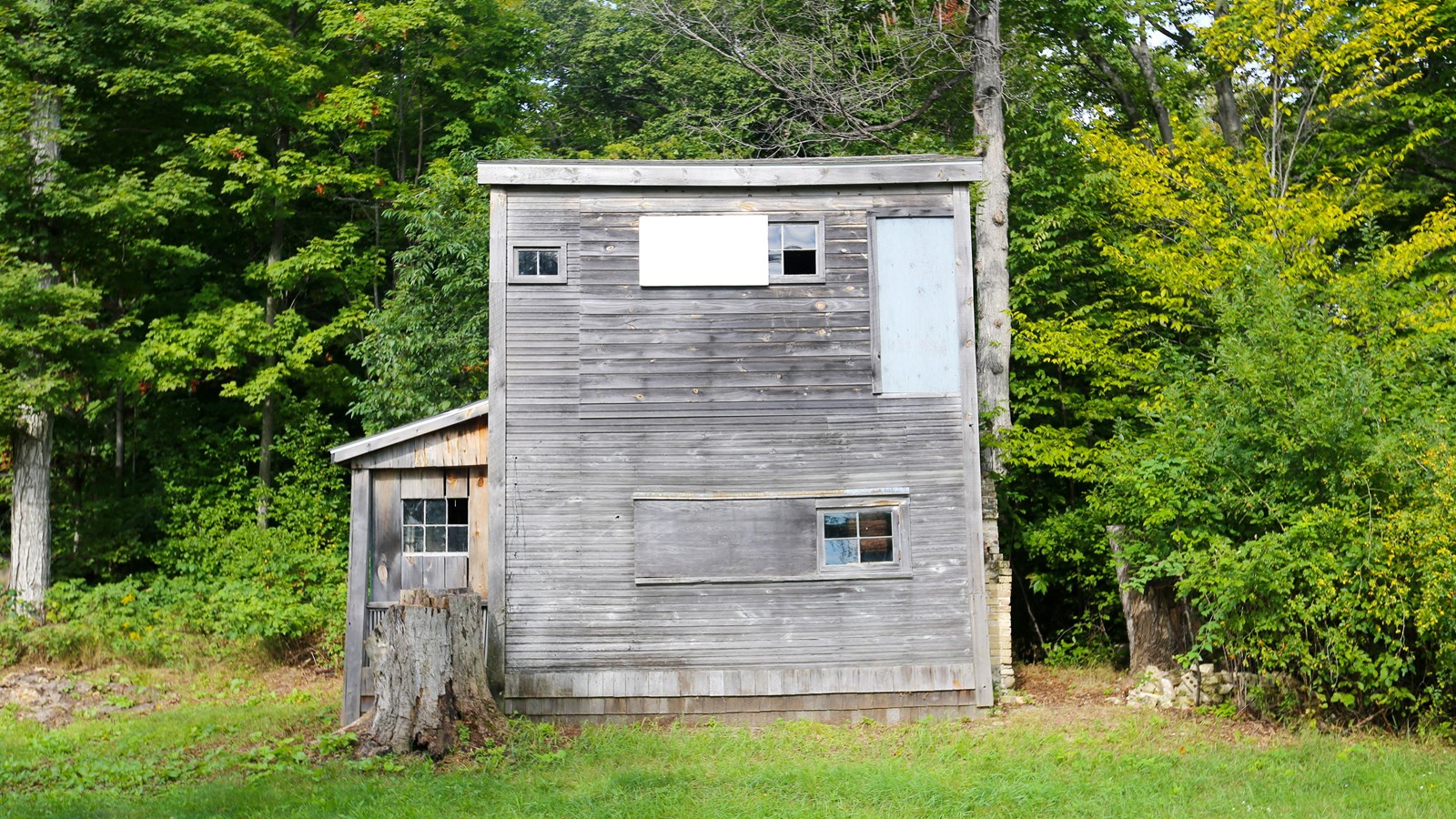Last updated: June 1, 2021
Place
Tree House

NPS credit
In 1895 or 1896, a solid-looking shingle-style cottage was constructed here by a couple known as Mr. and Mrs. Hewitt. Shirley Foote Alford described the Hewitts' Cottage Row house, furnished in burlap and calico, as "the prettiest cottage of all.
A few years later the Hewitts, who were immigrants from England, sold the cottage to Dr. John Edwin and Louise Rhoades. In a wooded area adjacent to the cottage, the Rhoades built a small play house for their daughter, Margaret. Later, after Margaret married Roderick Peattie, a lower floor was added to the play house, transforming it into a small, two-story, private cottage for Margaret and Roderick called "the treehouse."
In 1927, soon after inheriting her parent's cottage, Margaret Peattie sold the property to the Manitou Island Association. Jean Lundquist recalled that sometime during 1937-1950s the tree house was occupied by an American Indian man named Raphael. The cottage eventually fell into disuse and was torn down by the Manitou Island Association. However, Margaret and Roderick Peattie's "treehouse" remains standing on the site.
Wouldn't we all love a cottage on Cottage Row
The Cottage Row district is a linear cluster of small, wood-frame houses and other landscape elements sitting along the crest of the beach ridge that overlooks the Life-saving Service complex. It was the island's only speculative resort enterprise, the first of several efforts to turn the island into an exclusive retreat. The individually owned cottages were supported by a communal kitchen and dining facility. This resort setup was common during the nineteenth century and represents a broad trend in recreation on the Great Lakes region.
The buildings face eastward to take advantage of off-shore breezes, as well as superb views of the Manitou Passage and the Michigan mainland. From this prime vantage point, the summer residents could monitor activities of the life-saving service station, as well as steamship traffic through the passage. The configuration of the Cottage Row parcels and accompanying deed restrictions ensured that each property owner would have an unobstructed view of the beach and the Manitou Passage. A board walk, shaded by sugar maple and Norway maple trees, once extended along this area.
The Cottage Row colony provided seasonal employment for year-round island residents. Wives and children of North Manitou farmers and U. S. Life-Saving Service crewmen residents took jobs cooking, cleaning, and doing other domestic chores for Cottage Row residents, in the communal dining room, and at hotel operated by Katie Shepard. For the island's year-round residents, the colony represented a significant source of supplemental cash income. Although some of the cottage owners maintained small gardens, the hotel and summer visitors also provided a much-needed local market for fresh vegetables, fruits, meats, and dairy products.
Because residents and guests took meals at the communal dining room located at the northern end of Cottage Row, individual cottages originally lacked kitchens. After the Cottage Row dining room closed around 1900, Katie Shepard opened her home as a hotel and offered meals to summer residents in a detached dining pavilion. Rear kitchen ells later were added to several Cottage Row houses. Most of the additions probably were constructed during the early 1930s, shortly after Katie Shepard closed her hotel and dining room.
Getting to and from the island and their cottages wasn't always easy as Mrs. Shirley Foote Alford (whose family built one of the first cottages in 1894) explained:
"When people were planning to leave the island, their trunks were loaded on the farm wagon which would go to the top of the hill running down to the dock. There the wagon would wait until the steamer came in close and blew her whistle. If it was three whistles, wagon and people hurried down to the dock to see the boat land. If four whistles were sounded (urgent-danger and distress signal). We all went down as fast as possible to the Life Saving Station where passengers, trunks, baby carriages, ice boxes, etc. were taken out to the steamer in the Life-Saving Service surfboat, rowed by the crew, each man with an oar and the captain steering with a long oar in the stern."
